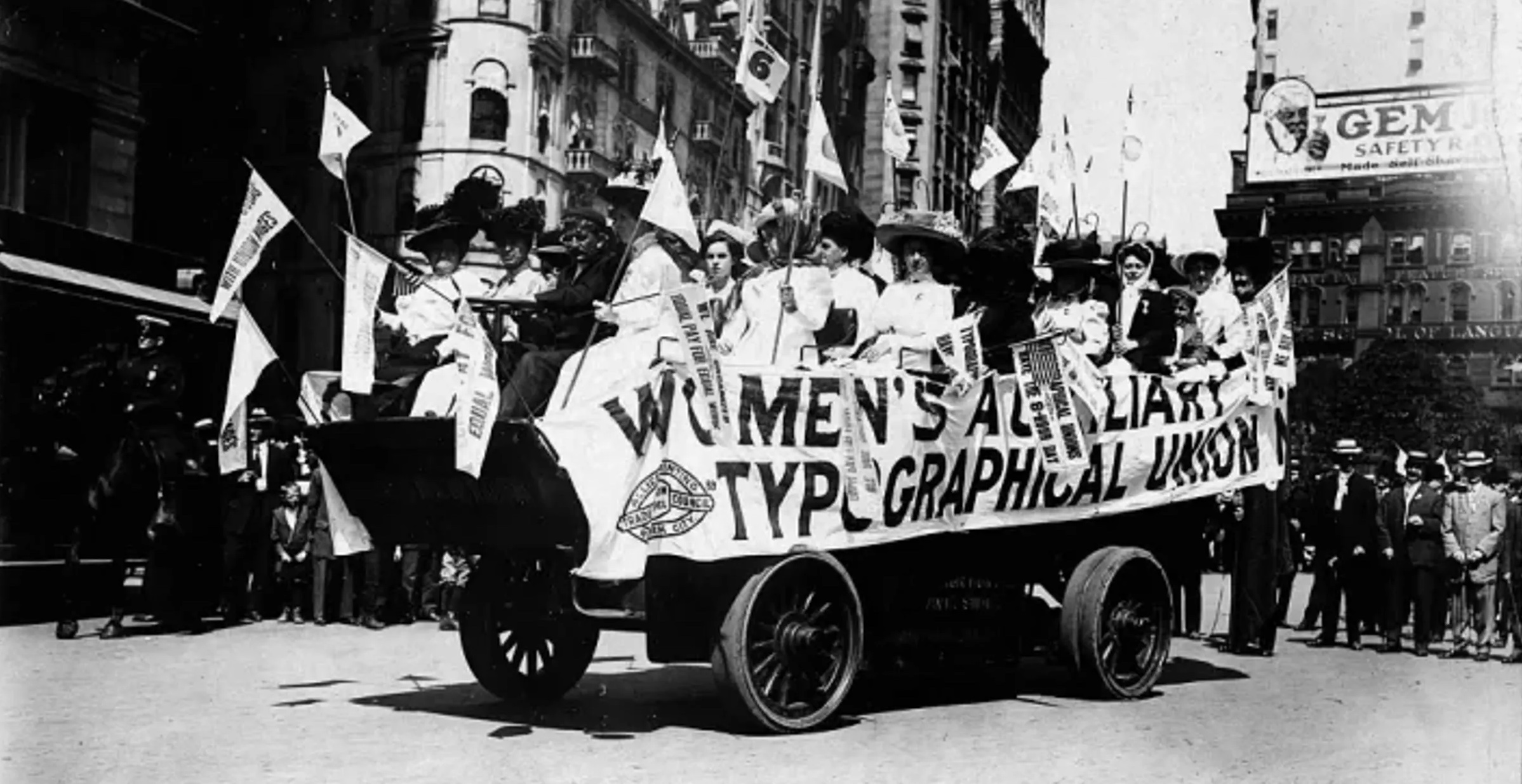Labor Day celebrates the working class and the gains of the labor movement that sought shorter workdays and better working conditions. In fact, we have the labor movement to thank for our current 40-hour work week.
The American labor movement can be traced back to the 1830s, when people worked up to 70 hours a week. At the time, only a few small unions existed and there were no labor laws or regulations to protect workers. Gradually, worker unrest began to build. For most of the 1800s, unions were relatively weak until they began combining together to create much larger organizations that fought for greater protections for their workers.


Labor Day in 1900 (Main Street, Buffalo, New York). Library of Congress
It was the powerful Central Labor Union that organized the first Labor Day in 1882 in New York City. The objective of the day was to bring awareness to labor issues and bring together workers from different industries to organize for their common interests. At that time, neither the local government nor any business was willing to recognize the first Monday in September as a holiday.


Sept. 6, 1882, The New York Times
The issue was solved by declaring a one-day strike in New York City. Striking workers were invited to march in a parade and eat and drink at a giant picnic afterwards. A reporter covering the first Labor Day described it as “one long political barbecue.” This marked the beginning of the food-centered celebration (and parade) that continues to this day. The first Labor Day was a huge success, and by 1894, Labor Day was declared a national holiday.

Labor Day Parade Float in New York City, early 20th century. New York Department of Labor

